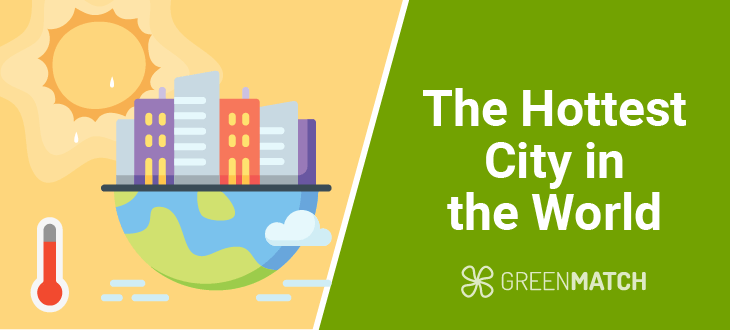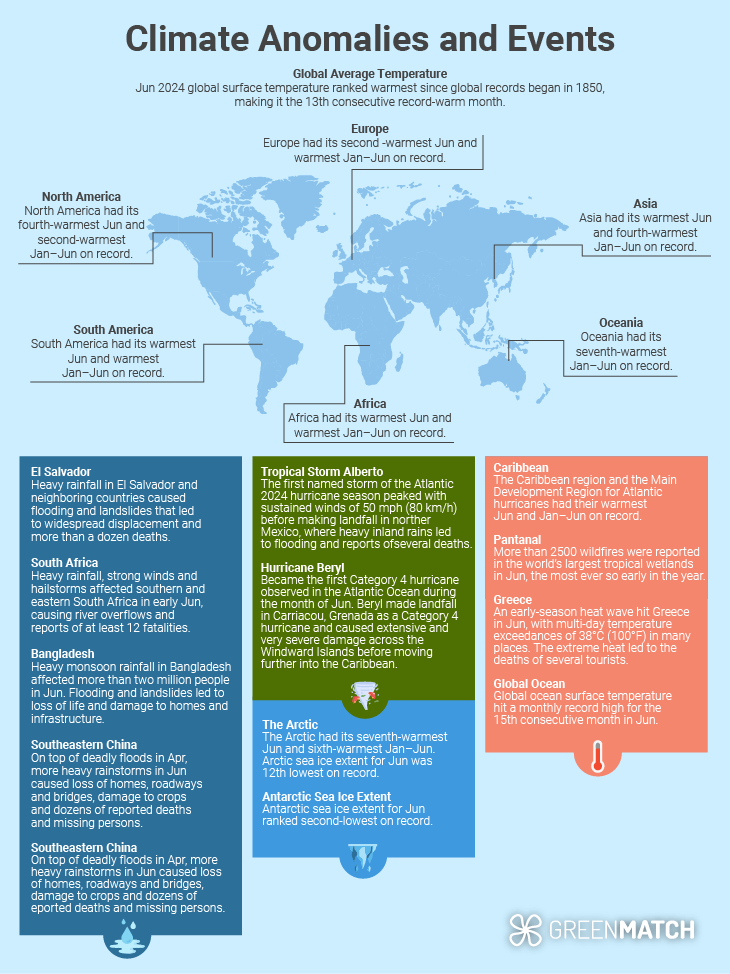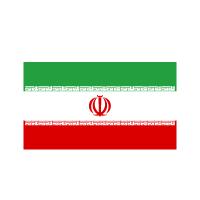- GreenMatch
- Blog
- The Hottest City in the World
The Hottest City in the World


- Doha, Qatar, ranks as the hottest city in 2024, with average temperatures reaching 41°C.
- Rising temperatures in cities like Phoenix and Delhi strain infrastructure and increase energy demands.
- Climate change exacerbates heatwaves, posing health risks and economic challenges globally.
- Cities invest in green spaces and renewable energy to combat extreme urban heat.
In 2024, the world is witnessing unprecedented heat levels, with several cities experiencing record-breaking temperatures. Climate change continues to increase global temperatures, leading to more frequent and intense heatwaves.
However, the hottest cities in the world are known for their extreme temperatures and often experience average daily highs that can exceed 40°C (104°F) during the hottest months.
This year, Doha, Qatar, has emerged as the hottest city in the world, with average temperatures soaring to around 41°C (106°F). The extreme heat in Doha and other cities affects daily life and poses significant health risks and economic challenges.
The rising temperatures are a stark reminder of the urgent need to address climate change. As global temperatures continue to climb, understanding the impact of extreme heat on urban environments and finding ways to mitigate these effects become increasingly important.
This analysis of the hottest cities in the world incorporates the latest data and the challenges they face due to rising temperatures.
Research Methodology
To compile this list, we analysed data from multiple sources, including climate reports, temperature records, and weather station data. Here’s how we did it:
- Data Collection: We gathered temperature data from reputable sources such as the National Oceanic and Atmospheric Administration (NOAA), the World Meteorological Organization (WMO), and NASA. These organisations provide comprehensive climate data, including historical and current temperature records.
- Cross-Referencing: We cross-referenced the collected data with recent climate studies and reports. This helped us verify the accuracy of the temperature records and identify any anomalies or discrepancies.
- Focus on Consistency: We focused on cities with consistently high average temperatures and those experiencing significant heatwaves. This involved looking at daily maximum temperatures and long-term averages to understand the heat patterns comprehensively.
- Validation: We validated the data by comparing it with other independent sources and ensuring that the temperature readings were consistent across different datasets. This included checking for potential errors or biases in the data collection process.

Top Hottest Cities in 2025
1. Doha, Qatar
This wealthy Gulf state is home to some of the world's tallest skyscrapers and hottest temperatures. Doha experiences scorching temperatures year-round, averaging 41°C (106°F).

The city's location in the Middle East and its desert climate contribute to its extreme heat. Residents rely heavily on air conditioning to cope with the sweltering conditions. This has significantly led to Water scarcity issues being exacerbated by the heat.
However, with the city's rapid development, the city has invested in green spaces, shaded areas, and advanced cooling technologies to cope with the scorching heat.
However, solar panels can provide renewable energy, reducing the reliance on fossil fuels, while heat pumps can offer efficient cooling solutions.
2. Ahvaz, Iran
Ahvaz's temperatures are significantly higher than the global average, often surpassing 50°C, while the global average hovers around 15°C. The city’s average temperature is 41°C (106°F).

The urban heat island effect exacerbates Ahvaz's already intense heat, a phenomenon where urban areas are significantly warmer than their rural surroundings due to human activities and infrastructure. Moreover, Ahvaz's geographical location near marshlands adds to the city's discomfort by increasing humidity levels and amplifying the sensation of heat stress among residents.
Oil industry activities exacerbate urban heat island effects, making summers unbearable. City officials struggle to maintain power grids during peak demand periods, often resulting in blackouts.
However, managing the city's infrastructure to cope with such extreme conditions is a constant struggle. Power grids often face overwhelming demand during heatwaves, leading to frequent blackouts that disrupt daily life and risk public health. These power outages are particularly concerning as they limit access to air conditioning, a critical tool for coping with the oppressive heat.
3. Kuwait City, Kuwait
Kuwait City, the capital of Kuwait, is one of the hottest cities in the world, with an average temperature of 45°C (114°F). Kuwait’s oil industry also contributes to its high temperatures due to industrial heat emissions.

The city frequently experiences temperatures exceeding 50°C during summer, making it a challenging environment for its residents.
Historical heatwaves, such as the one in 2016, have pushed temperatures to nearly 54°C, highlighting the urgent need for effective heat management strategies.
This has led to extreme heat, affecting daily life and economic activities. This has led to increased energy demand strains on the power grid, posing challenges for power infrastructure.
The city focuses on enhancing urban planning with more green spaces and implementing energy-efficient building designs.
Additionally, promoting solar panels can reduce the city's carbon footprint and provide a sustainable energy source.
4. Phoenix, Arizona, USA
Maricopa County, where Phoenix is located, is at risk of becoming uninhabitable to humans in the next 20 to 40 years without significant intervention.

The city has an average of 41°C (106°F). The temperature difference can be as much as -12.22°C to -9.44°C (10-15°F) higher in the city centre compared to the outskirts. In 2023, the city broke records with 54 days above 43.3°C (110°F), including 31 consecutive days reaching that mark. Heat-related mortality in Arizona was four times larger in 2019 than in 2004.
The city has experienced seven times more heat-related deaths than other states in the Federal Reserve's 12th District.
The city aims to have 25% tree canopy coverage by 2030, up from 11-12%. By 2050, the city is projected to experience an average of about 47 days per year over 110°F, up from 7 days in 1990
However, to migrate the effects, applying reflective coatings to streets to reduce surface temperatures. In addition, implementing a renewable energy efficient system and retrofitting a building with heat-effective roofing and insulation material could help relieve the heat.
5. Delhi, India
Delhi, the bustling capital of India, is no stranger to extreme temperatures. With an average high of 40°C (104°F) and record highs reaching 49.9°C (121.8°F), the city faces significant challenges in managing its infrastructure and ensuring the well-being of its residents.

Historically, the city has seen a sharp increase in heatwave days, from 49 in 2018 to 90 in 2019 and even more in subsequent years. This trend is consistent with broader patterns of climate change, which have made heatwaves in India 1.5°C warmer than the warmest previously observed.
As temperatures rise, so does the electricity demand, primarily for air conditioning and cooling systems. This surge often leads to grid failures, leaving many residents without power during the hottest parts of the day. In May 2024, Delhi experienced record power demand, resulting in rolling blackouts and significant disruptions to daily life.
To combat these challenges, innovative strategies and investing in resilient infrastructure, such as renewable energy, heat cover, and water management strategies, must be implemented to ensure a sustainable future.
6. Bandar Seri Begawan, Brunei
This city in Southeast Asia has an average temperature of 38°C (100°F), one of Asia's hottest cities. Its tropical rainforest climate contributes to high humidity levels, making the heat feel even more oppressive.

However, heat impacts public health, increasing cases of heat-related illnesses. Maintaining water supply and quality takes time and effort.
Given the severity of the impact, the city needs to improve water management systems and promote public awareness about heat safety.
However, to combat these conditions, Bandar Seri Begawan can invest in urban planning incorporating more green spaces and water features. Using air source heat pumps for efficient cooling and promoting the use of reflective building materials can also help manage the heat.
7. Manama, Bahrain
Manama's average temperature of 37°C (99°F) is among the hottest cities globally. The city's coastal location and desert climate result in high temperatures and humidity, exacerbating the heat and affecting residents' quality of life.

Historical records show that temperatures can spike dramatically, making these measures essential for public health. However, the city is investing in renewable energy sources and enhancing public transportation to reduce emissions.
Implementing and increasing vegetation cover can help reduce temperatures. Additionally, creating public cooling centres and promoting energy-efficient building designs can provide relief during extreme heat periods.
8. Abu Dhabi, UAE
Abu Dhabi experiences an average temperature of 36°C (97°F). The capital of the UAE faces extreme heat, particularly during the summer months, when temperatures often exceed 45°C.

The city's rapid urbanisation and desert environment contribute to its high temperatures. The government is investing in large-scale solar farms and encouraging using heat pumps in residential and commercial buildings. These measures aim to reduce energy consumption and provide a sustainable cooling solution.
However, enhancing public transportation to reduce car usage and developing green rooftops can also help mitigate the urban heat island effect.
9. Dubai, UAE
Known for its hot weather, Dubai has an average temperature of 36°C (97°F). The extreme heat heavily impacts the city's infrastructure and lifestyle.

Similar to Abu Dhabi, Dubai faces high energy and water demands. The heat also impacts tourism and outdoor events.
Given that Dubai is implementing green building standards and promoting the use of solar panels. Heat pumps could also be installed in new developments to provide efficient cooling and reduce the reliance on fossil fuels.
10. Sana’a, Yemen
Sana’a has an average temperature of 36°C (97°F). The city's high altitude provides some relief from the heat, but it still experiences sweltering conditions. However, this makes it one of the hottest places in the region.

Sana’a can invest in solar energy projects and improve water management practices to cope with the heat. Increasing tree cover and creating shaded public spaces can also provide relief from the intense sun.
The carbon intensity of CO2 produced could be curbed to provide sustainable energy and cooling solutions to the environment.
11. Bamako, Mali
Bamako's average temperature of 36°C (97°F) makes it one of the hottest cities in Africa. The city's location in the Sahel region contributes to its high temperatures and arid climate.

Bamako can benefit from solar-powered irrigation systems and heat-resistant crop varieties. Additionally, promoting energy-efficient cooling technologies and enhancing public awareness about heat-related health risks can help residents adapt to the heat.
Additionally, raising public awareness about heat-related health risks is essential. Efforts to educate communities about staying hydrated and recognizing signs of heat-related illnesses can significantly reduce health risks during peak heat periods.
The City's heat challenges are compounded by frequent power outages, which make it difficult for residents to rely on air conditioning or fans. This situation is exacerbated by the country's economic struggles and political instability, which have led to a withdrawal of foreign investments.
12. Nouakchott, Mauritania
Nouakchott also has an average temperature of 36°C (97°F). The city's desert climate results in extremely hot conditions.

However, the city needs help in providing adequate water and healthcare services. The heat exacerbates poverty and food insecurity.
To combat the heat, Nouakchott can invest in solar energy and improve urban planning to include more green spaces. Implementing water-saving technologies and promoting sustainable building practices can also help manage the heat.
Increasing urban greenery, improving building insulation, and promoting energy-efficient cooling systems can help mitigate the heat.
13. Ndjamena, Chad
With an average temperature of 36°C (97°F), Ndjamena experiences extreme heat. The city's location in central Africa and its semi-arid climate contribute to its high temperatures.

Ndjamena is also investing in community-based climate adaptation projects to enhance resilience. Moreover, the city is also improving public health infrastructure and promoting heat-resistant building materials to help residents cope with the heat.
More investment is needed to focus on green infrastructure, promote energy-efficient building designs, and implement water conservation measures to cope.
14. Lagos, Nigeria
Lagos has an average temperature of 36°C (97°F). The city's coastal location and tropical climate result in high humidity levels, making the heat feel more intense.

This city's population density also exacerbates the heat, leading to health and infrastructure challenges. However, the city also enhances public transportation to reduce traffic congestion and lower CO2 emissions.
Given the extreme issue, strategies such as increasing vegetation, using reflective building materials, and implementing energy-efficient cooling systems can help manage the heat. Public awareness campaigns on heat safety are also essential.
15. Tripoli, Libya
Tripoli experiences an average temperature of 36°C (97°F). The city's Mediterranean climate results in hot, dry summers and mild winters.
The city's Mediterranean climate and urbanisation contribute to its high temperatures. To cope, Tripoli can invest in green infrastructure, promote energy-efficient building designs, and implement water conservation measures.
16. Algiers, Algeria
Algiers, the capital of Algeria, experiences an average temperature of 36°C (97°F). The city's coastal location and Mediterranean climate contribute to its high temperatures.

Historical data indicates that annual mean temperatures across Algeria have increased since the 1960s, with a warming trend of about 2.7°C per century since the 1900s. The city's position also subjects it to the Sirocco winds, hot, dry winds blowing from the Sahara Desert, causing temperatures to spike even further.
The extreme heat in Algiers leads to a surge in energy demand, particularly for air conditioning and cooling systems. This increased demand strains the city's power grid, leading to frequent blackouts during peak usage.
Moreover, the heat can cause roads to buckle and rail tracks to warp, leading to transportation disruptions. Algiers has had to invest in heat-resistant materials and technologies to maintain its transportation infrastructure.
Heatwaves pose significant health risks, including heat stress, dehydration, and heatstroke. Vulnerable populations, such as older people and children, are particularly at risk.
However, the city is working to mitigate the impacts of extreme heat through strategic investments in infrastructure, green spaces, and public health initiatives.
17. Tunis, Tunisia
Tunis, the vibrant capital of Tunisia, is known for its unique Mediterranean climate. The city experiences an average temperature of 36°C (97°F). The city's Mediterranean climate results in hot, dry summers and mild winters.

However, the desert winds heavily influence the climate, which can cause temperatures to soar even higher, sometimes exceeding 40°C (104°F) from June to September.
Mild and rainy, with average temperatures around 12°C (54°F) in January. Snow is rare, but historical records show occasional snowfall, like in January 1981.
Like much of Tunisia, Tunis is experiencing rising temperatures due to climate change. The average temperature in Tunisia has increased by approximately 1.2°C from 1901 to 2020, with predictions of further rises by 2050 and 2100.
Tunisia's government has integrated climate adaptation into its national strategies, emphasising sustainable development and resilience. The National Climate Change Strategy includes measures for adaptation and mitigation, aiming for a 45% decrease in carbon intensity by 2030.
18. Casablanca, Morocco
Casablanca, Morocco's largest city, faces unique challenges due to its rising temperatures. The city's average temperature hovers around 35°C. The city's coastal location and Mediterranean climate contribute to its moderate temperatures compared to other cities.

Over the years, the city has experienced significant heatwaves, such as the February 2024 event that saw temperatures soar above 36°C, setting new monthly records. These heatwaves are intensified by human-driven climate change, which has made similar events 1°C to 2°C hotter than they would have been in the past. Rapid urbanisation has exacerbated the urban heat island effect, where urban areas become significantly hotter than their rural surroundings.
This is due to the prevalence of heat-absorbing materials like concrete and asphalt, combined with a need for more vegetation. The city's population density, exceeding 40,000 inhabitants per square kilometre in some areas, further contributes to this phenomenon.
However, Casablanca can deal with urban heat through strategic planning and green spaces. Historical heat events have shaped its current climate strategies. Although a lot still needs to be done.
By investing in green spaces, using reflective materials, and implementing comprehensive public health plans, Casablanca is working to mitigate the impacts of extreme heat and ensure a sustainable future for its inhabitants.
Comparing 2024 with Previous Years
According to the Copernicus Climate Change Service (C3S), the daily global average temperature reached a new record high of 17.16°C on 22 July 2024, surpassing the previous record of 17.09°C set just one day before on 21 July 2024, and 17.08°C set on 6 July 2023.
This trend of increasing temperatures is consistent with the broader pattern of global warming observed over the past few decades.
The National Oceanic and Atmospheric Administration (NOAA) reported that June 2024 was the warmest June, with a global surface temperature of 1.22°C above the 20th-century average of 15.5°C. This marked the 13th consecutive month of record-high global temperatures.
The first six months of 2024 also ranked the warmest in NOAA's 175-year record, with a global surface temperature 1.29°C above the 1901-2000 average.

Key Findings
- 2024: The warmest year on record with an average global temperature of 14.90°C, surpassing the previous high of 14.86°C in 2023.
- 2023: Marked by unprecedented global temperatures, every month ranking among the top seven warmest for that month. The second half of the year saw the highest temperatures ever recorded.
- 2016: Previously held the record for the warmest year before being surpassed by 2023 and 2024, with an average temperature of 14.84°C.
- Trend: The data shows a clear upward trend in global temperatures over the past decade, with each year consistently ranking among the warmest on record
The comparison of global temperatures over the past decade highlights the significant impact of climate change. The consistent rise in temperatures underscores the urgent need for international action to mitigate the effects of climate change.
Land and Ocean Temperatures Comparison
Rising temperatures in both land and ocean environments highlight the growing impact of climate change. Heatwaves are becoming more frequent and intense, affecting daily life, ecosystems, and the environment.
The extreme heat poses significant challenges, from health risks to economic impacts. For instance, rising ocean temperatures can lead to coral bleaching and disrupt marine ecosystems. Warmer waters also contribute to the melting of polar ice caps, leading to rising sea levels.
Additionally, increased land temperatures can affect wildlife habitats and biodiversity, leading to species distribution shifts and potential extinction. Extreme heat can affect crop yields and food security, impacting local and global economies.

Challenges Due to Rising Temperatures
Cities experiencing extreme heat face numerous challenges in maintaining and adapting their infrastructure. These multifaceted challenges impact everything from transportation systems to energy grids and public health.
- Infrastructure Failure: Extreme heat can push materials and equipment beyond their temperature thresholds, leading to failures in power lines, refrigeration units, roads, and rail lines. For instance, heatwaves have caused roads to buckle, rail tracks to warp, and power cables to melt.
- Health Risks: Increased heat-related illnesses and mortality rates. Vulnerable populations, such as older people and those with chronic conditions, are particularly at risk. For example, Europe saw over 61,000 heat-related deaths in the summer of 2022.
- Energy Consumption: Higher demand for air conditioning and cooling systems. This can strain power grids and lead to blackouts during peak usage times. For example, thermoelectric power plants may need to reduce capacity because the water used for cooling becomes too warm. This is particularly problematic in cities with ageing infrastructure.
- Water Scarcity: Strain on water resources due to evaporation and increased consumption. Heatwaves lead to higher water usage for drinking, cooling, and irrigation. This can strain existing water resources and lead to shortages.
- Agricultural Impact: Reduced crop yields and food security issues. This is particularly concerning for cities reliant on nearby agricultural areas. Increased water demand for irrigation during heatwaves can deplete local water resources, exacerbating scarcity issues.
- Infrastructure Stress: Roads, buildings, and other infrastructure face damage from extreme heat. High temperatures can expand materials, causing cracks and structural damage in buildings. This is especially problematic for older structures not designed for extreme heat. Rail tracks can warp, and buses and trains may overheat, leading to delays and safety concerns.
- Urban Heat Islands: Urban areas with dense buildings and little vegetation can become significantly hotter than surrounding rural areas. This effect exacerbates heat waves and increases cooling costs. Low-income neighbourhoods often lack green spaces and cooling infrastructure, making residents more vulnerable to heat-related issues.
- Economic Impacts: High temperatures can reduce productivity, particularly in outdoor and manual labour sectors. This can lead to significant financial losses. Increased healthcare costs due to heat-related illnesses and exacerbation of chronic conditions strain public health systems. The cost of maintaining and upgrading infrastructure to cope with extreme heat can substantially impact city budgets.
Adaptation Strategies Coping with the Heat
To address these challenges, cities are adopting various strategies:
- Green Infrastructure: Planting trees and creating green spaces can help reduce urban temperatures and provide shade. Cities like Medellin have implemented extensive tree-planting programs to combat heat.
- Cool Materials: Using reflective materials on roofs and pavements can lower ambient temperatures. This reduces the need for air conditioning and helps manage energy consumption.
- Water Management: Enhancing water infrastructure and promoting efficient water use can help cities manage increased demand during heat waves.
- Public Health Plans: Implementing early warning systems and public education campaigns can help communities prepare for and respond to extreme heat. Health plans that include cooling centres and emergency services are essential.
- Energy Efficiency: Improving energy efficiency in buildings and promoting renewable energy sources can help manage increased energy demands. Investing in resilient energy infrastructure is crucial to prevent blackouts during peak usage.
- Air Conditioning: Essential for surviving the extreme heat, air conditioning is widely used in homes, offices, and public spaces.
- Hydration: Staying hydrated is crucial. People are encouraged to drink plenty of water and avoid outdoor activities during peak heat hours.
- Urban Planning: Cities invest in green spaces and shaded areas to relieve the heat.
Future Outlook: Mitigating Extreme Heat in Cities
Doha, Qatar, holds the title of the hottest city in the world in 2024. The extreme temperatures in Doha and other cities underscore the urgent need to address climate change.
However, rising global temperatures are expected to continue, driven by factors such as greenhouse gas emissions, deforestation, and urbanisation. As cities grow and develop, they often become heat islands, where temperatures are significantly higher than in surrounding rural areas.
This phenomenon exacerbates the impact of heatwaves and poses severe challenges to urban living.
Key Projections:
- Increased Frequency of Heatwaves: Heatwaves are expected to become more frequent and severe, affecting more regions and populations.
- Rising Sea Levels: Higher temperatures contribute to the melting of polar ice caps, leading to rising sea levels that threaten coastal cities.
- Health Risks: The incidence of heat-related illnesses and deaths is likely to increase, particularly among vulnerable populations such as the elderly and those with preexisting health conditions.
- Economic Impact: The economic burden of extreme heat includes increased energy costs, reduced labour productivity, and damage to infrastructure.
To combat the rising temperatures and mitigate their effects, cities can adopt various strategies. These measures help reduce temperatures and improve the overall quality of urban life.
Planting trees and creating green spaces can significantly reduce urban temperatures through shading and evapotranspiration. Urban forestry initiatives can enhance the aesthetic appeal of cities while providing cooling benefits.
Given the significance of health and climate change, cities must prioritise these investments to adapt to rising temperatures and ensure sustainable urban development.
Developing and implementing heat action plans that include early warning systems, designated cooling centres, and coordinated emergency responses can help cities manage extreme heat events effectively.
These measures will become increasingly critical in ensuring urban resilience and sustainability as global temperatures rise.

Inemesit is a seasoned content writer with 9 years of experience in B2B and B2C. Her expertise in sustainability and green technologies guides readers towards eco-friendly choices, significantly contributing to the field of renewable energy and environmental sustainability.
We strive to connect our customers with the right product and supplier. Would you like to be part of GreenMatch?

